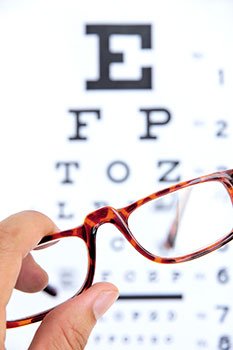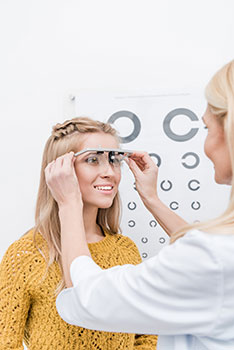The sky is the daily bread of the eyes.
Emerson also said that life is a journey and not a destination. If the path to your destination gets a little blurry, it’s time to think about vision insurance. This is especially true if you spend more than 3 hours a day in front of the computer. Almost 90% of people who use a computer for 3+ hours per day suffer from vision problems!
| Vision insurance helps pay for the cost of an eye exam and any glasses, lenses, or contact lenses you need to correct your vision. |
What does vision insurance cover?

It helps cover all these good things:
- the cost of a yearly eye exam
- corrective lenses (if you need them), including contact lenses
- a contribution toward elective procedures like LASIK
Most plans will cover the full cost of your eye exam, and offer a stated dollar value toward the purchase of eyeglass frames, lenses, or contact lenses. Depending on your selections for these items, the entire cost might be covered, leaving little to no out-of-pocket costs for you.
It's also good to know that your health insurance doesn't cover non-emergency eye care. In fact, your health insurance probably only covers situations where your overall health is threatened by an injury to the eye or a disease that affects the eye. If you notice your vision deteriorating over time, to the point where you can’t drive or read computer screens easily, that’s not going to be covered by a typical HMO or PPO plan.
How much does it cost?
It’s less expensive than you think! Although cost varies by provider and plan, it’s a safe bet that if you give up one family meal out per month, you can afford vision insurance. On the other hand, according to VSP, the total national average cost of a year’s worth of vision care (eye exam, frames, and lenses) without insurance is $416.
Click Here for Vision Insurance Quotes!
What happens during an eye exam?

Your eye doctor will test for things like depth perception, peripheral vision, the way your eye muscles move, and how your pupils respond to light. None of this requires any invasive tests, and you never have to turn your head and cough. Here’s what your eye doctor will check for during your exam:
- Health history
- Autoimmune conditions like lupus, MS, psoriasis, and thyroid disease can affect your eyesight. Your eye doctor also needs to know what medications you’re taking in case you experience dry eye or other vision-related side effects.
- Visual acuity
- This is where you’ll face the infamous Snellen chart. If you can only read the big “E,” that means you have 20/200 vision. (That’s bad.)
- Overall eye health
- You’ll be tested for how well your eyes focus and move together, as well as how they detect depth and color.
- Keratometry
- This easy test measures the curve of your cornea.
- Refraction
- You look at the eye chart through a number of different lenses to see how much corrective power you need.
Are vision problems common?
More than you might think:
- 14 million Americans over the age of 12 have less than perfect vision
- Of those 14 million, 11 million could be helped with glasses or contacts
- Nearly 90% of people who use a computer for 3+ hours per day suffer vision problems
- Vision disorders cost $8 billion per year in lost productivity
- 38% of people with impaired vision don’t seek help because they think it will cost too much (in other words, they don’t have vision insurance)
- Uncorrected vision problems can decrease employee performance by 20%
Sources:
VSP: National Average Cost without Vision Coverage
AOA: Comprehensive Eye and Vision Examination
CDC: Vision Health Initiative
CDC: Morbidity and Mortality Weekly Report, May 20, 2011
OptumHealth Vision Summary